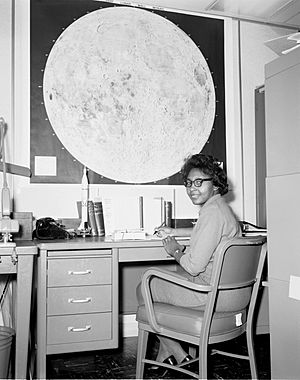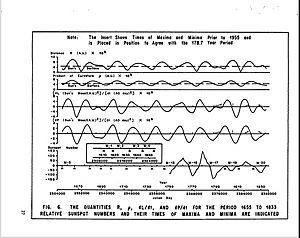Jeanette Scissum facts for kids
Quick facts for kids
Jeanette Scissum
|
|
|---|---|

Scissum at her desk in NASA
|
|
| Born | October 6, 1939 Guntersville, Alabama, U.S.
|
| Alma mater | Alabama A&M University |
Jeanette Alexander Scissum, born on October 6, 1939, is an American mathematician and space scientist. She is also known for supporting fairness and equal opportunities for everyone. Jeanette Scissum developed new ways to predict the sunspot cycle, which is like the "weather" on the Sun.
Jeanette Scissum's Early Life and School
Jeanette Scissum grew up in Guntersville, Alabama. She was one of six children in her family. Her father was a farmer who later worked at a grain company. He became paralyzed and could not work anymore. Her mother worked in people's homes.
Jeanette went to Lakeview School, which was the only school for Black children in her area. She was a good student and played basketball. She finished school in 1956. Her father always encouraged her to go to college.
Jeanette received a small scholarship to attend Alabama A&M University. She also worked at a telephone switchboard to help pay for her studies. She earned two degrees in mathematics. Later, after working for 13 years, she went back to school to get her PhD in computer science.
Jeanette Scissum's Career at NASA
Jeanette Scissum first taught at Councill Training School in Huntsville. She soon realized that teaching was not the right path for her. In 1964, she joined NASA's Marshall Space Flight Center as a mathematician. She was the first African-American mathematician to work there.
In 1967, she wrote an important report for NASA called "Survey of Solar Cycle Prediction Models." This report shared new methods for predicting the sunspot cycle. Sunspots are dark spots on the Sun's surface that change over time. Understanding them helps scientists learn about space weather.
In the mid-1970s, Jeanette worked as a space scientist in a special branch at Marshall. She also led projects about Earth's atmosphere and space plasma. After getting her PhD, she moved to Maryland. There, she worked at Goddard Space Flight Center as a computer systems analyst. She helped manage NASA's information and technical systems. Jeanette Scissum retired in 2005.
Her achievements have been recognized by "Mathematically Gifted & Black." She was honored during Black History Month in 2018.
Jeanette Scissum's Work for Fairness
Jeanette Scissum cared deeply about making sure everyone had equal chances. She volunteered to be an equal employment opportunity officer at NASA. This meant she helped make sure people were treated fairly at work.
NASA Administrator James C. Fletcher gave her an award for her efforts. However, fighting for others sometimes made her own career difficult. A supervisor once warned her that management was unhappy with the number of complaints she was handling.
In 1975, Jeanette wrote an article about equal opportunity. She explained that many problems could be avoided if people communicated better. She also noticed that it was hard for Black employees, including herself, to move into leadership roles at NASA. She found this unfair and hard to understand.


